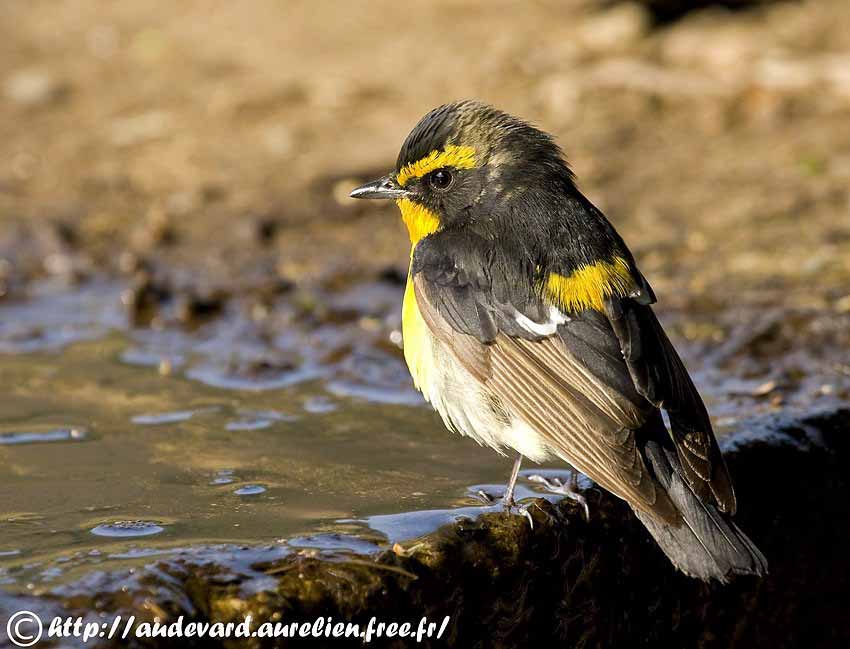
Narcissus Flycatcher
Ficedula narcissina
Passeriforme Order – Muscicapidae Family
BIOMETRICS :
L : 13-13,5 cm ; Env : 22 cm ; Poids : 11-12 gr
DESCRIPTION:
Narcissus Flycatcher’s name comes from the yellow colour of the Narcissus flower.
Adult male is brightly coloured. It has black and orange or yellow plumage.
On the upperparts, mantle and upper back are black. Upper wings are brownish-black with white patch on inner greater coverts. Uppertail coverts and tail are black. The lower back and the rump are yellow.
On the underparts, chin, throat and breast are bright orange-yellow. The rest of the underparts are whitish, with pale yellow flanks.
On the head, crown, nape, lores, cheeks and ear-coverts are black. We can see a conspicuous yellow or orange-yellow supercilium, from lores to ear-coverts.
The thin bill is dark grey-blue, sometimes with darker upper mandible. Eyes are dark brown. Legs and feet are bluish-grey.

Female is different in plumage. She is duller than male, with grey-brown upperparts, sometimes tinged olive. The rump is greenish, slightly yellowish. Uppertail coverts and outer tail feathers are rufous or chestnut-brown. Upper wings are dark grey with indistinct whitish wing bar. Tertials show buffy-white edges.
The underparts are pale buffy-white washed brown, with indistinct dark mottling on throat and breast sides.
On the head, crown and face are grey-brown, with buffy lores and eye-ring.
Bare parts are similar to those of male.
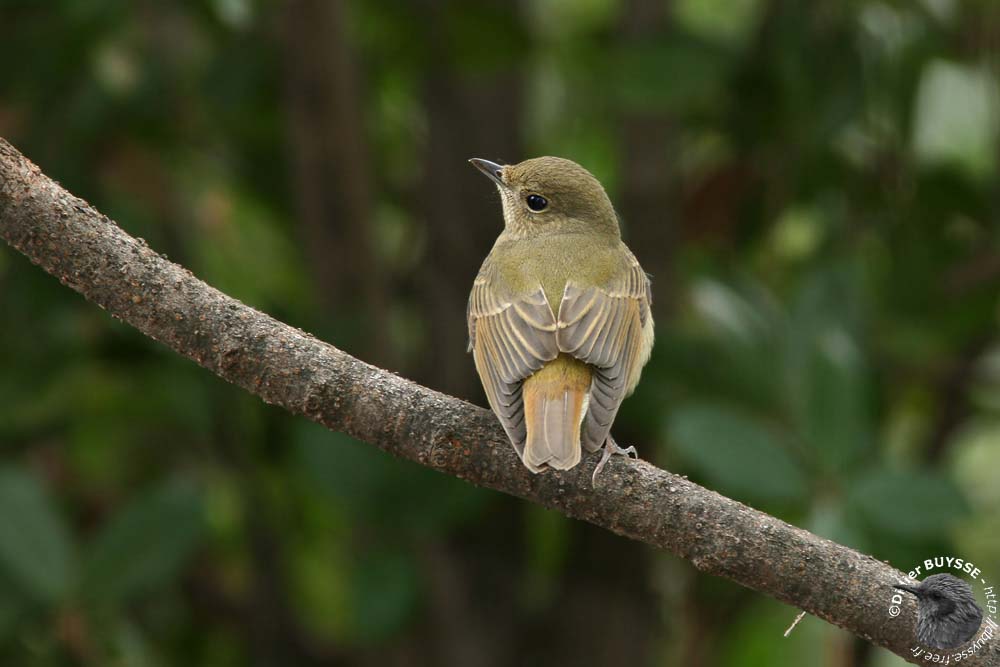
Juvenile resembles female, with browner upperparts, and buffy tips and edges of feathers.
Immature male is as adult but duller, with nape and mantle mottled brown, and lacking yellow on rump. Belly and vent are streaked.
Narcissus Flycatcher has three subspecies:
F.n. narcissina, the nominate race
F.n. owstoni is slightly smaller with heavier bill. It is paler in plumage.
F.n. elisae has shorter wings. It has greyish olive-green upperparts and yellow underparts.
VOICE: SOUNDS BY XENO-CANTO
Narcissus Flycatcher utters rapid series of soft warbling “pipipiityuito-foyee” or variations often repeated.
HABITAT:
Narcissus Flycatcher lives in subtropical broadleaf and conifer forests. It breeds in mixed deciduous forest, to limit of treeline in some parts of the range, and to subalpine evergreen zone, up to 1800 metres of elevation. In other parts of the range, it is found in lowland forests at 150 to 200 metres, and also between 800 and 1400 metres;
During migration and in winter, it is found in more open woodlands, edges of cultivated areas with scattered trees, coastal wooded areas (mangroves), parks and gardens.
RANGE:
Narcissus Flycatcher breeds in North-east China, Japan and Russia, on Sakhalin Island.
It winters in South-east Asia, and cross the South Korea, in order to reach its breeding areas.
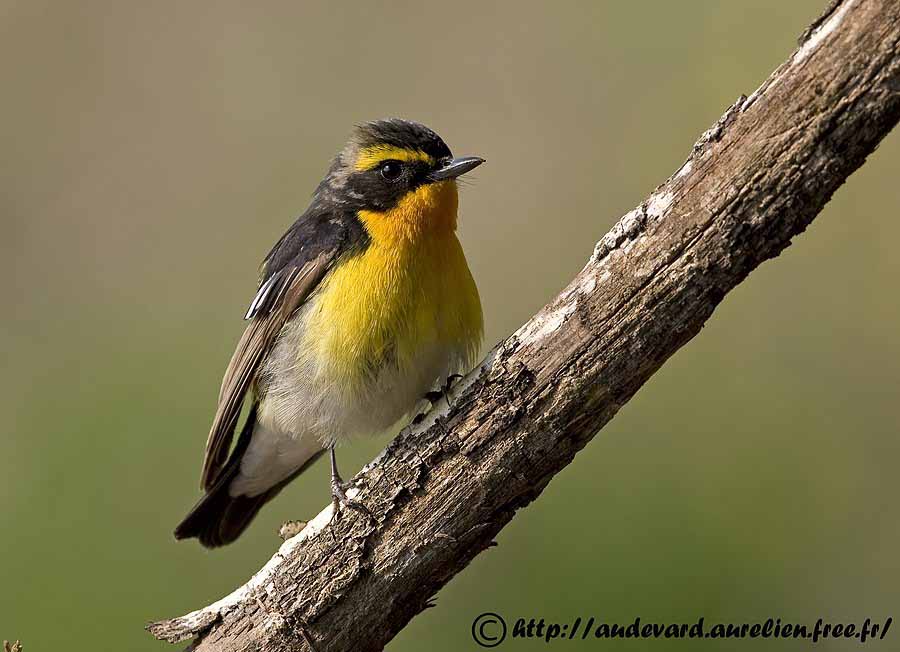
BEHAVIOUR:
Narcissus Flycatcher feeds mainly on insects and some berries. It hunts from a perch, motionless and in upright stance, watching for preys. When a prey is detected, it sallies to catch it in flight, and comes back to the perch for eating it.
Narcissus Flycatcher forages at mid-level in trees, in the bushy undergrowth and in the low vegetation. It is often seen alone or in pairs. It also performs flycatching from open perch in the upper canopy, and often returns to the same perch.
Narcissus Flycatcher may be resident or migratory. The subspecies F.n. owstoni is resident or partially migratory. Nominate race and F.n. elisae perform long-distance flights.
Narcissus Flycatcher is territorial during breeding season. It defends the nest-site and its favourite feeding areas.
FLIGHT: Narcissus Flycatcher performs a weak fluttering flight with shallow wing beats.
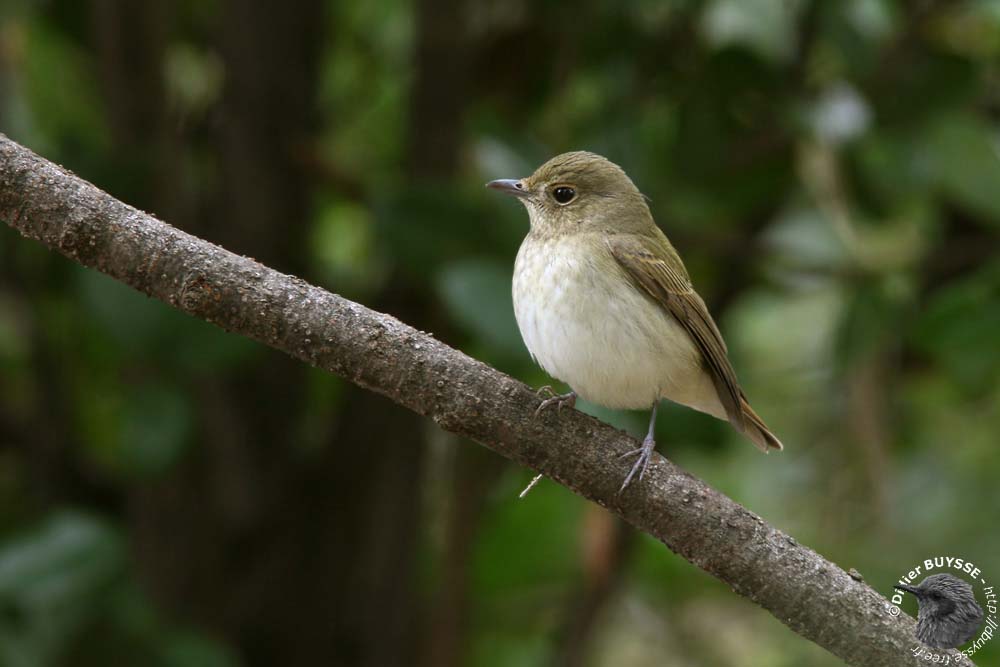
REPRODUCTION:
Breeding season occurs from May to July.
Narcissus Flycatcher often uses natural cavities such as hollow in tree trunk, or bark crevice, but it may also nest among a mount of cut or fallen branches. The nest is placed at about 1, 50 to 4, 50 metres above the ground.
Hole-nesting could be a defence against brood parasitism by Cuculidae.
The nest is cup-shaped, and made with leaves and plant fibres. It is lined with softer grass.
Female lays 3 to 5 white eggs with fine red markings. Incubation lasts about two weeks, mainly by female, but both parents rear the young and feed them.
This species produces one brood per season.
DIET:
Narcissus Flycatcher feeds mainly on insects, caterpillars and small invertebrates. It also consumes some fruits, such as berries.
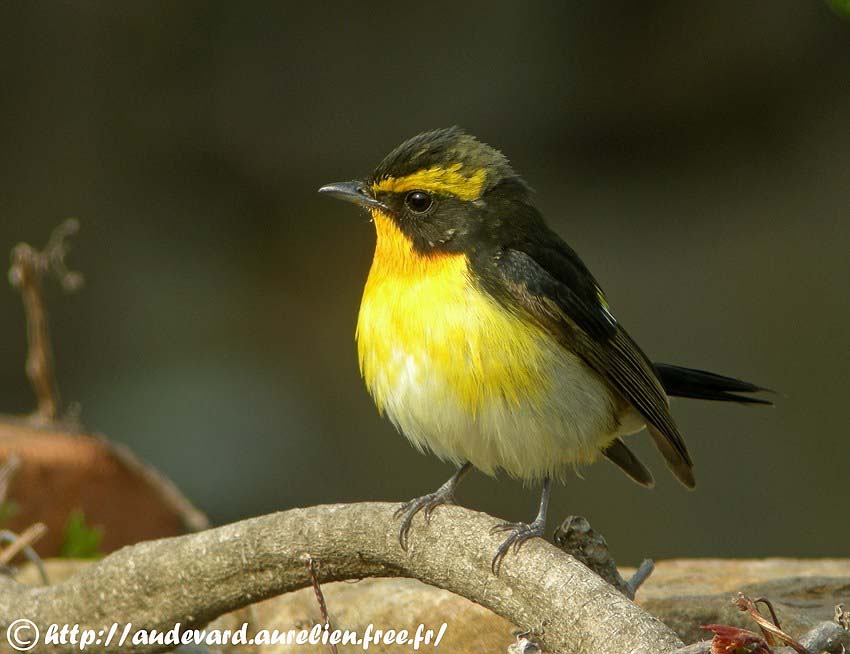
PROTECTION / THREATS / STATUS:
Narcissus Flycatcher is common to locally abundant on Sakhalin Island. It is common and widespread in most parts of Japan, but it is uncommon in China.
The race owstoni has declined, and it is now uncommon to rare in the non-breeding range, probably due to heavy clearance and fragmentation of the habitat.
However, Narcissus Flycatcher populations are not globally threatened at this moment.
Fr: Gobemouche narcisse
All: Goldschnäpper
Esp: Papamoscas de Narciso
Ital: Balia narcisina
Nd: Narcis vliegenvanger
Russe: Японская мухоловка
Sd: Gulbrynad narcissflugsnappare
Photographs of the male by Aurélien Audevard
His website: OUESSANT DIGISCOPING
Photographs of the female by Didier Buysse
His website :
Vision d’Oiseaux
Text by Nicole Bouglouan
Sources:
HANDBOOK OF THE BIRDS OF THE WORLD Vol 11 by Josep del Hoyo, Andrew Elliott and David Christie - Lynx Edicions - ISBN: 849655306X
What Bird-The ultimate Bird Guide (Mitchell Waite)
Wikipedia (Wikipedia, The Free Encyclopedia)